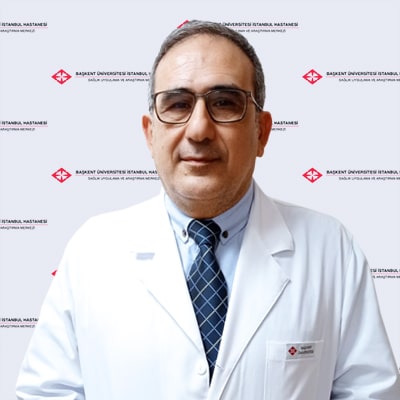
Overview
Frequently asked questions about department and answers:
Can children have heart diseases like adults?
On the contrary to the popular belief, heart disease is not specific for adults. Children can also have heart diseases. Most of them are congenital heart diseases. Children may also have acquired heart diseases following certain conditions such as acute rheumatic fever or Kawasaki disease, although more rarely.
What is congenital heart disease?
Development of fetal heart is completed in the first three months of intrauterine period. The potential problems that may emerge in this period may hinder normal development of heart, cause holes between cardiac chambers, stenoses and failures in vessels or valves. Sometimes, more complex disorders can be seen in formation of cardiac chambers and vascular communications. These diseases that develop secondary to abnormal growth of heart in intrauterine life and persist at the birth are called CONGENITAL HEART DISEASES. Most of these diseases show symptoms within two years after birth. Sometimes, even if the disease is congenital in nature, they can manifest symptoms in the following years.
What are the causes of heart diseases in children?
There are many factors in development of congenital heart diseases; however, the underlying cause can be clearly identified in only 10% of them. In addition to genetic disorders, there are also environmental factors that can adversely affect development of the heart in intrauterine period. Acknowledged environmental risks include diabetes mellitus or rheumatoid diseases in mother, infection (e.g. rubella) and use of drug in pregnancy. While genetic disorders can be inherited among family members, they can also be seen only in the baby due to advanced age of mother in pregnancy
Are heart diseases common in children?
Almost one out of every one hundred newborn infants is at risk for a congenital heart disease. This risk can alter depending on various genetic and environmental factors. For example, if there is congenital heart disease in more than one member of a family and the diseased members are closely related (for example, if the sibling or a parent has disease), risk of recurrence is higher than 1% in this family. However, coronary heart disease in adult members of family does not pose risk regarding congenital heart diseases.
What are symptoms of a heart disease in a child?
Although all congenital heart diseases are present at birth, symptoms can emerge in different periods depending on type and severity of disease. Most of them show symptoms during infancy. Rapid breathing, shortness of breath, difficulty and getting tired during breastfeeding, inability to gain weight, cyanosis around mouth, in tongue and nails, and pulmonary infection at frequent intervals can be signs of congenital heart disease. These sings are not necessarily seen at the same time. If a part of these signs can be recognized by parents, they are mostly noted by pediatrician who supervises the baby. For some babies, a heart disease is investigated due to murmur heard by the doctor before recognition of the signs. For elder children, the findings can be fainting, chest pain, palpitation, and poor exercise capacity comparing to the peers.
What is murmur?
Closing sound of valves can be clearly heard in the auscultation of heart. A different sound, somewhat like whooshing in heart, is called murmur. Severe murmurs can be a sign of heart disease; however, not all murmurs caused by a heart disease in children. Most of the mild murmurs are called INNOCENT MURMUR and they can be heard in a healthy heart. Sometimes, whether the murmur is innocent or not cannot be decided through auscultation and other examinations can be needed, such as echocardiography.
Which methods are used for diagnosis of heart disease?
For children, accurate diagnosis and timely treatment are critical and life-saving in heart diseases. Echocardiography is the most frequently used diagnostic modality.
ECHOCARDIOGRAPHY (ECHO): This method is used to evaluate structure and functions of heart using ultrasound waves. The mode of operation is similar to other ultrasound devices; it does not emit radiation. Patients are evaluated and regularly followed up with echocardiography before and after surgery in Pediatric Cardiology. Echocardiography is also used to provide the surgical team with detailed information in surgery and cardiologist during invasive catheterization procedures. Called transesophageal echocardiography, this procedure is performed by inserting the probe into esophagus under anesthesia. Fetal echocardiography means cardiac evaluation of babies in case of high-risk pregnancy. Thanks to this method, congenital heart diseases can be investigated in fetus through an intrauterine examination starting from 19 to 20 weeks of the pregnancy.
CHEST X-RAY: This method gives broad information regarding the underlying heart disease by imaging size and shape of the heart and pulmonary vessels.
STRESS TEST: This test can be used to compare the exercise capacity of the patient with children at the same age for investigating onset of complaints during exercise, evaluating some rhythm disorders, and examining congenital heart diseases before and after surgery.
HOLTER TEST: The simplest method for determining the changes in heart rhythm is electrocardiography. If these short-term rhythm data is not diagnostic and longer recordings are necessary, ECG parameters are continuously recorded for 24 hours by HOLTER devices without need to hospitalize patients and restrict daily activities.
CARDIAC CATHETERIZATION / ANGIOGRAPHY (ANGIO): This diagnostic modality is employed for patients who are planned to undergo surgery, when echocardiography does not provide sufficient information. On the other hand, congenital heart diseases are non-surgically treated in a catheterization session. It is an option for all children and even for neonates.
What kind of treatments is used for children with congenital heart diseases?
Most of the congenital heart diseases are surgically treated. Some of the patients may die unless the condition is managed early. In addition, some small holes in heart close spontaneously, while some of them can be followed up without surgery as they are too small, although they do not close spontaneously. Some congenital heart diseases can be treated with catheterization. Stenoses in valves and vessels can be dilated with balloon during catheterization (balloon angioplasty), while certain holes in heart can also be closed with catheter. Every disease requires a different approach. The method and timing of follow-up and treatment should be decided by pediatric cardiologist who follows up the child. In addition to echocardiography, catheter angiography is also performed for most of the patients who will undergo a surgery. The findings are discussed in the council of pediatric cardiology and cardiovascular surgery departments and a council decision is made. Council decisions aim to determine the type and time of the surgery.
Can heart diseases of children recover spontaneously?
Some congenital heart diseases can recover spontaneously. Those are small holes between atria or ventricles. However, these patients should be regularly followed up by pediatric cardiologist during closure of these holes.
Is there a certain age limit for treatment?
Most of the congenital heart diseases are surgically treated. There is a different timing for every disease. On the contrary to popular belief, heart surgery can be performed for children at any age. There is no certain age or body weight limit. An urgent surgery in neonatal period saves life in some heart diseases. On the other hand, a longer waiting period may be necessary due to potential of spontaneous closure of holes. These patients should also visit pediatric cardiologist for follow-up examinations at regular intervals. Patients who do not present for follow-up visit regularly may lose their chance for surgery as they wait too long.







